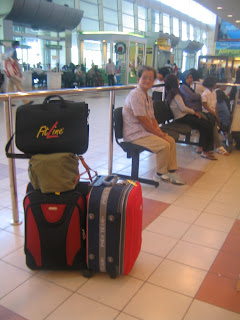Thursday, April 28, 2011
Monday, April 25, 2011
Sunday, April 24, 2011
Alto Saxophone
The alto saxophone is a member of the saxophone family of woodwind instruments invented by Belgian instrument designer Adolphe Sax in 1841. It is smaller than the tenor but larger than the soprano, and is the type most used in classical compositions. The alto and tenor are the most common types of saxophone.
Friday, April 22, 2011
Mnemonic
Mnemonics are devices to help us remember.
Where there is something to remember, mnemonics can be put to use. You will find them in every discipline from music, medicine, biology, and electronics to spelling, physics, geography, and remembering telephone numbers!
There are mnemonic methods that can dramatically improve your memory. Do you find you forget people's names? Would you like to remember telephone numbers better? Or perhaps you simply want to remember more of what you read?
http://www.fun-with-words.com/mnemonics.html
Tuesday, April 19, 2011
Noodles
My home-cooked noodles
Although the Chinese, Arabs, and Italians have all claimed to have been the first to create noodles, the first written account of noodles dates from the Chinese East Han Dynasty, between AD 25 and 220. During the Chinese Song Dynasty (960–1279) noodle shops were very popular in the cities, and remained open all night.
Sunday, April 17, 2011
Koala Bear
Koala is the only mammal, other than the Greater Glider and Ringtail Possum, which can survive on a diet of eucalyptus leaves.
Koala seldom drinks water obtaining it from the eucalyptus leaves, which are 50% consisting of water. Although, they can drink water if due to drought the leaves water content is reduced.
Koalas consume eucalyptus leaves and bark from 12 different eucalyptus tree species. They also consume mistletoe and box leaves.
Koala in Victoria would have different diet from koala in Queensland as different species of eucalypts grow in different parts of Australia.
Sometimes koalas eat leaves from other trees such as wattle tree, tea tree, paperbark tree.
Each koala eats approximately 200 to 500 grams of leaves per day.
Koalas have a slow metabolic rate due to their high-fiber, low nutrient diet. Because they store little or no fat, koalas must adopt strategies that conserve energy. Sleeping is one of them.
Koalas sleep for up to 16 hours per day in order to conserve energy.
A very slow metabolic rate optimizes its energy requirements and allows koalas to retain food within their digestive system for a relatively long period of time, maximizing the amount of extracted energy.
Friday, April 15, 2011
Reflection of the mosque
 A mosque is a place of worship for followers of Islam. A common feature in mosques is the minaret, the tall, slender tower that usually is situated at one of the corners of the mosque structure. The top of the minaret is always the highest point in mosques that have one, and often the highest point in the immediate area.
A mosque is a place of worship for followers of Islam. A common feature in mosques is the minaret, the tall, slender tower that usually is situated at one of the corners of the mosque structure. The top of the minaret is always the highest point in mosques that have one, and often the highest point in the immediate area.
Wednesday, April 13, 2011
Sunday, April 10, 2011
Friday, April 8, 2011
Wednesday, April 6, 2011
Monday, April 4, 2011
Red Luggage

Is there such a word ‘luggages’, or is it just ‘luggage’ even if we have more than one piece of it?
‘Luggage’ is a collective noun that refers to all the stuff you’re carrying with you on your trip. So, be it one bag or a few, it’s all called ‘luggage’.
And yes there is such a word as ‘luggages’, even though it might seem redundant. Imagine that there are two groups of tourists in the hotel lobby waiting for their buses to the airport. You’d presumably have two separate areas where their luggages (that belong to either group) are all ready to be loaded onto the buses.

Saturday, April 2, 2011
Subscribe to:
Posts (Atom)

















